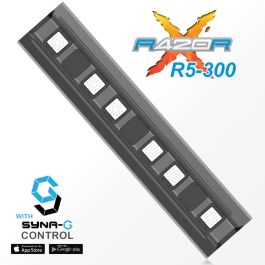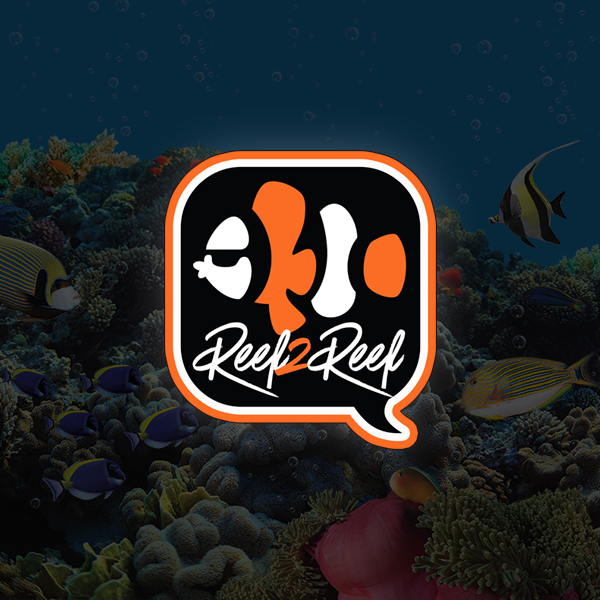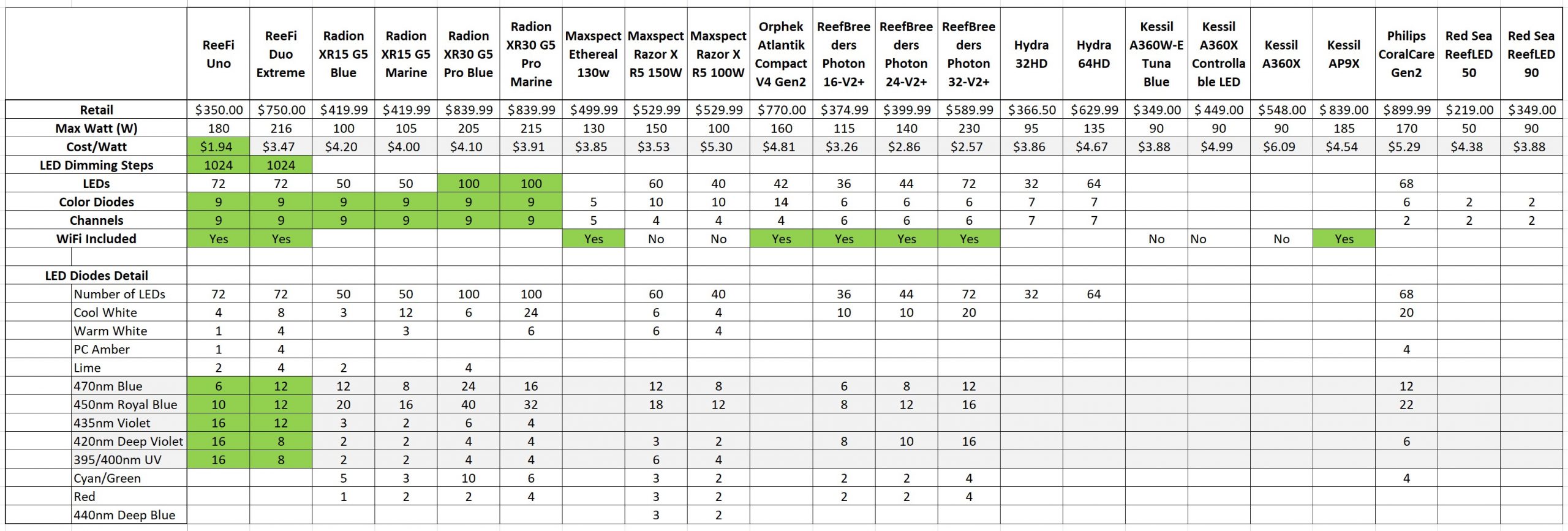Well your Viparspectras do not "do" 165 watts
Most estimates are 110w with both channels at 100% Each channel is roughly 55 watts. Minor difference between the 27 and 28 led channels.
Drivers are around 550mA and led voltage is around 3.6 so 3.6 x .550 x 28 = 55.44 watts.
Photons " honest".
No idea of the noopsyches.
Just an fyi...
Oh probably any light where the states watts divided by the number of LEDs comes out to 3 or more is probably lying since must "3 watt class" LEDs are rarely run at 3 watts.More like 2.
"5 watt class" probably more like 3-4ish though.
One of the reasons they can last a long time. Less heat.
I suppose I was trying to make a point comparing apples to apples.
I looked at the AP700 but never bought one. I was never comfortable pushing one to max coverage and when I considered buying 2 it priced it out of consideration.
I don't use my lights at 100%. or max coverage.
The 2 Viparspectras are on a 29 gallon tank now.
The Photon 48 is in the fish room on the 75 still. That light is made for a 75. Would be great on a deeper 90 with the same H and W.
I upgraded mine and it has a nice app now on my phone.
I get cheaper lights and use more at 40-70% power. No failed diodes or drivers so far.
I found this on the ReefFi page. a Nice comparison.
The lights I am using are $154 (no hanger/arm) for 140 watts and cover 24x24inches.
You can get more watts or wider coverage but I was comfortable these would do what I wanted
I hedged my bets and put them in LED CoralCovers. I could have used T5 hybids but NO MORE BULB CHANGES.
This made my cost about the same as buying Hydras but I have lots of light over my tank and they are running easy at 30-50%
Hydra 32s were my second choice but the cost of a T5 hybrid added to them made my choice for me.
So I used them on the 180 when I set it up and ran them next to the MH/T5 on the 240.
They worked well.
Now the 240 has the same setup after the strange day of ballast death that took out 1/2 the lights over the 240.





